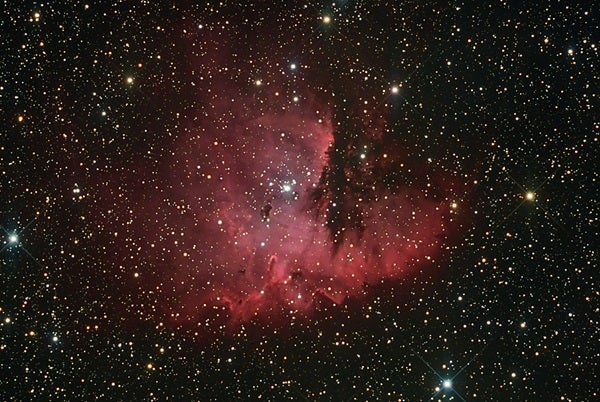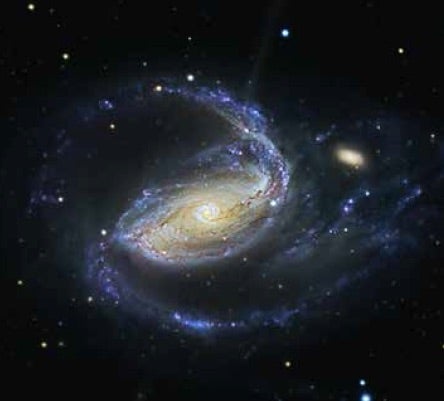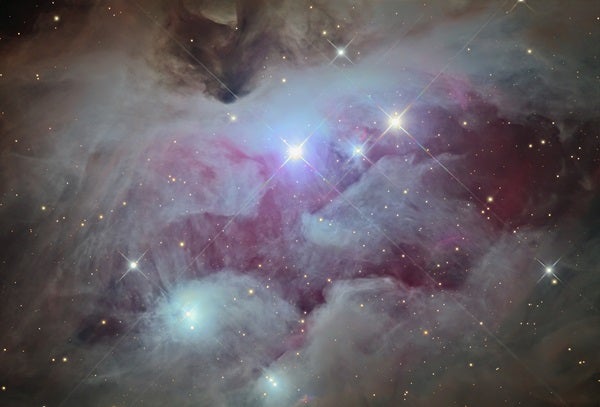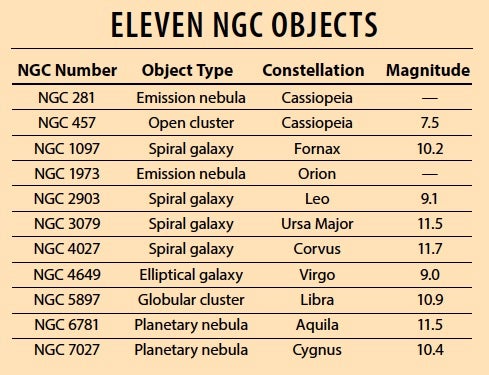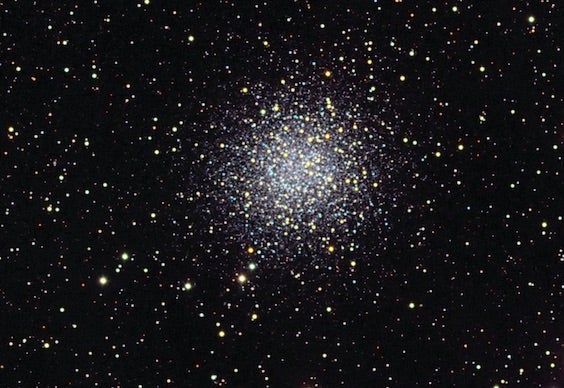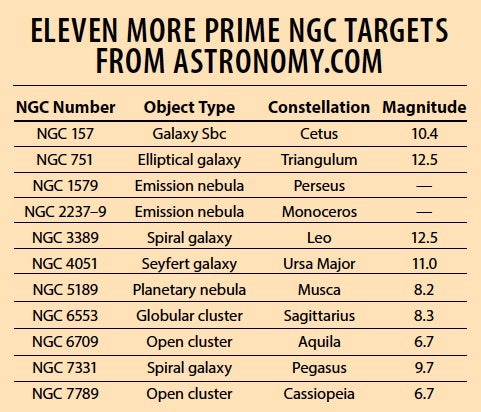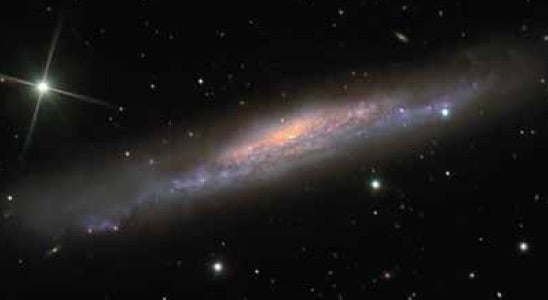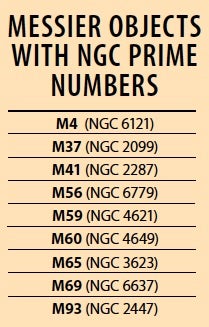That begs two questions: Who created the NGC? And why is it important to astronomers, professional and amateur alike? The catalog makes for a great observing list, and I am going to highlight some NGC objects that are prime numbers — thus, the primer. But first, a little historical background.
Here come the Herschels
Let’s go back a couple of centuries, before the nature of the universe was known. Telescopes were small, with optics and views equivalent to a typical small telescope used by new observers today. Enter William Herschel, observer extraordinaire from England. In the 18th century, he and his sister Caroline scanned the skies and documented clusters and nebulae in a sky that was as unfamiliar to observers as the American and African continents were to explorers at the time. The true nature of objects like galaxies was unknown; they were simply amorphous clouds in the heavens, no different from the Orion Nebula (M42), the Dumbbell Nebula (M27), or an unresolved globular star cluster.
The Herschel family did not stop documenting the heavens in the early 19th century. William’s son, John, added more objects — especially with his extensive observations from South Africa. The result was a list twice as large as his father’s. When published in 1864, the General Catalogue of Nebulae and Clusters recorded 5,079 objects.
Observers continued to add their discoveries to the astronomical world over the next 20 years. John Louis Emil Dreyer, a Danish-born astronomer, moved to Ireland and eventually became director of the Armagh Observatory, where he became the “compiler-in-chief.” He gathered data from some 50 sources, chief among them the General Catalogue, to publish the New General Catalogue in 1888. For a very brief time, with 7,840 objects, the NGC listed every known nebula and cluster visible in the sky from any latitude.
The advent of astronomical photography brought out tens of thousands of additional objects as the 20th century unfolded. Telescope mirrors with diameters of 100 to 200 inches, coupled with improving film sensitivity, didn’t render the NGC obsolete, but required newer systems of designations. Among the better known include the Shapley-Ames list of bright galaxies, Zwicky’s Morphological Catalogue of Galaxies and Clusters of Galaxies, Vorontsov-Velyaminov’s Morphological Catalogue of Galaxies, Ruprecht’s lists of open clusters, Perek and Kohoutek’s planetary nebula list, and Sharpless’ compendium of gaseous nebulae. The list goes on and on.
Many amateur astronomers start with observing objects in the Messier catalog, but quickly expand their horizons by tackling the NGC objects. For most, the NGC catalog provides the visual observer with sufficient targets to last a lifetime.
The NGC is not perfect — far from it. It is awash with mistakes. Dreyer did not make the effort to visually confirm the existence of each object from its source; he assumed it to be accurate. As a result, there are many missing and misplaced objects. Just transpose two numbers in right ascension or declination, and the galaxy, nebula, or cluster “disappears.”
American astronomer Jack Sulentic began the effort to review the accuracy of the NGC in 1964. His colleague William Tifft worked on the final effort in 1969 using the Palomar Observatory Sky Survey (POSS). Their first Revised New General Catalogue of Nonstellar Astronomical Objects was published in 1973. The RNGC was a major improvement over the NGC. Some objects rejected by Sulentic and Tifft have been located by experienced observers like American geodesist Brent Archinal, who identified things that simply didn’t show up in the POSS. For example, star clusters with weak condensations were nearly invisible and blended into the background.
A primer is a book or instructions providing help. A prime is a number divisible only by 1 and itself. The NGC contains 7,840 objects, and there are 990 prime numbers within that range. By far, most are galaxies. The fewest of any type — five — are planetary nebulae.
I have selected a prime number of these, 11, for your observing pleasure. (See “Eleven NGC objects,” below.) I picked the following objects because they are bright, interesting, and lie scattered across the heavens. They include clusters, nebulae, and galaxies.
NGC 281, discovered by American astronomer Edward Emerson Barnard five years before Dreyer published the NGC, is called the Pacman Nebula because a dust cloud gives it a “mouth” like the
video game icon. With a small telescope, under a sky free from light pollution, you’ll find it 1.7° east of magnitude 2.2 Alpha [α] Cassiopeiae.
NGC 457, a spectacular open cluster in Cassiopeia, was named the Owl Cluster in 1978 by Astronomy Editor David J. Eicher. This loose assemblage of stars includes a body, legs, open wings and two bright “eyes”(Phi1 and Phi2 Cassiopeiae), and is a wonderful sight in small telescopes.
NGC 1973 belongs to the Orion Nebula complex, along with NGC 1975 and NGC 1977. Together, the three objects are known as the Running Man. This bright cloud of ionized hydrogen and dust is visible with small telescopes. Light pollution filters bring out details like brightness variations throughout the cloud.
NGC 2903 is one of the brightest galaxies in Leo, a spiral with a weak bar and wide sweeping arms. Messier missed it in his catalog while fainter objects made the list. The galaxy’s fine detail requires larger instruments, but the hub is bright enough to spot in suburban skies.
NGC 4027 is No. 22 in Halton Arp’s Atlas of Peculiar Galaxies. Located in Corvus, this distorted spiral galaxy is visible through small scopes. One spiral arm is much larger than the other, giving it a “C” shape. Observing structure in galaxies is not easy through small scopes, but those star systems undergoing collisions are more conspicuous than most.
NGC 4649, also known as M60, is a giant elliptical galaxy on the edge of the Virgo Cluster of galaxies. An easy object for small telescopes, it appears as a round glow with a brighter core. With a modest telescope and better skies, look for NGC 4647, a face-on spiral galaxy practically in apparent contact. Nine Messier objects are prime-number NGCs. (See “Messier objects with NGC prime numbers,” at right.)
NGC 6781 rates as Aquila’s best planetary nebula. Larger than Lyra’s more famous Ring Nebula (M57) but more than two magnitudes fainter, it is visible in small telescopes as a ghostly disk. Modest scopes show a slightly dimmer center than the outlying ring.
NGC 7027 is a compact rectangular planetary nebula in Cygnus. It is a relatively close (3,000 light-years) and young (900 years old) object of its type. Roughly 18″ by 11″ in extent, it has a high surface brightness, giving observers the chance to see color (blue-green) from ionized oxygen.
Give the NGC a workout
At 130 years old, the New General Catalogue is hardly “new.” Yet it isn’t just an anachronism from a time before photography, when the universe was fresh to observers. Tonight, whether you are using binoculars or a behemoth telescope, the NGC offers you prime opportunities to explore the heavens. Grab the opportunity to explore myriad clusters and galaxies within it. This should be your go-to catalog. Observations add a new layer to the rich observation history common to each object. Your first views should be as exciting as they were for the discoverers.

